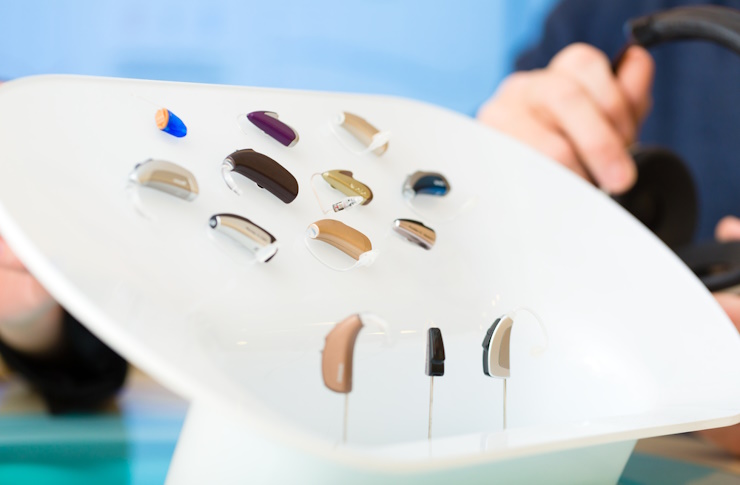Hearing Aids in Australia: A Senior's Guide to Prices, Technology, and Government Subsidies
Hearing loss is a common challenge faced by many seniors in Australia. As technology advances, hearing aids have become increasingly sophisticated, offering improved sound quality and features to enhance daily life. This guide will explore the latest in hearing aid technology, available options, costs, and government assistance programs to help seniors make informed decisions about their hearing health.

What Key Features Define Modern Hearing Aids?
Modern hearing aids have come a long way from the bulky, conspicuous devices of the past. Today’s hearing aids are equipped with advanced features that significantly improve the user experience. Digital signal processing allows for clearer sound reproduction and better noise reduction, making it easier to focus on conversations in noisy environments. Many models now offer Bluetooth connectivity, enabling users to stream audio directly from smartphones, televisions, and other devices. Some hearing aids even incorporate artificial intelligence to learn and adapt to the wearer’s preferences over time, automatically adjusting settings for optimal hearing in different situations.
How Can the Australian Government Hearing Services Program Help?
The Australian Government Hearing Services Program is designed to provide support for eligible individuals seeking hearing assistance. This program offers a range of services, including hearing assessments, fitting of hearing devices, and ongoing maintenance. To be eligible, you must be an Australian citizen or permanent resident aged 21 years or older, and meet certain criteria such as receiving a pension or holding a DVA Gold Card. The program covers the cost of hearing assessments and provides fully or partially subsidized hearing aids, depending on your specific circumstances and needs.
What Are the Different Types of Hearing Aids Available?
Hearing aids come in various styles to suit different levels of hearing loss and personal preferences. Behind-the-ear (BTE) aids are among the most common and versatile, suitable for mild to profound hearing loss. These devices sit behind the ear with a tube connecting to an earmold in the ear canal. In-the-ear (ITE) aids are custom-made to fit within the outer portion of the ear, suitable for mild to severe hearing loss. For those seeking a more discreet option, completely-in-canal (CIC) aids are tiny devices that fit entirely within the ear canal, though they may have limited features due to their small size. There are also receiver-in-canal (RIC) aids, which are similar to BTE aids but with the speaker placed in the ear canal for improved sound quality and a less visible profile.
What Are the Cost Considerations for Hearing Aids in Australia?
The cost of hearing aids in Australia can vary significantly based on the technology level, features, and brand. While basic models may start from around $1,500 per ear, more advanced options with premium features can cost upwards of $5,000 per ear. It’s important to consider that these devices are typically replaced every 3-5 years, making the investment a long-term one.
| Provider | Basic Model Cost (per ear) | Premium Model Cost (per ear) | Key Features |
|---|---|---|---|
| Hearing Australia | $1,500 - $2,500 | $3,500 - $5,000 | Government subsidies available, wide range of brands |
| Specsavers Audiology | $1,495 - $2,495 | $3,495 - $4,995 | Free hearing tests, 60-day satisfaction guarantee |
| Connect Hearing | $1,800 - $3,000 | $4,000 - $6,000 | Comprehensive aftercare, latest technology |
| AudioClinic | $1,700 - $2,800 | $3,800 - $5,500 | Personalised fittings, flexible payment options |
Prices, rates, or cost estimates mentioned in this article are based on the latest available information but may change over time. Independent research is advised before making financial decisions.
When considering the cost of hearing aids, it’s crucial to factor in additional expenses such as regular maintenance, battery replacements (for non-rechargeable models), and potential repairs. Many providers offer package deals that include follow-up appointments and adjustments, which can add value to your purchase. It’s also worth exploring if your private health insurance offers any coverage for hearing aids, as some policies may provide rebates or contribute towards the cost.
For those eligible for the Government Hearing Services Program, the cost of hearing aids can be significantly reduced or even fully covered, depending on your specific circumstances and the type of device you require. This program aims to make hearing assistance more accessible to those who need it most, ensuring that financial constraints don’t prevent seniors from addressing their hearing needs.
In conclusion, while navigating the world of hearing aids can seem daunting, understanding the technology, types, and costs involved can help seniors make informed decisions. With the support of government programs and a range of options available, finding the right hearing solution is more achievable than ever. Remember to consult with a qualified audiologist to determine the best hearing aid for your specific needs and lifestyle.
This article is for informational purposes only and should not be considered medical advice. Please consult a qualified healthcare professional for personalized guidance and treatment.




